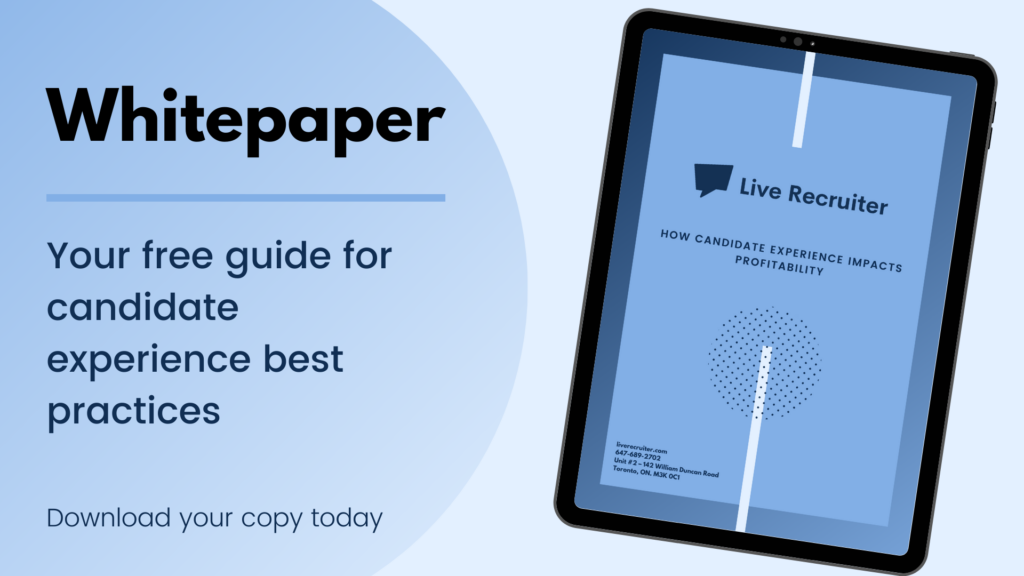What is the turnover tsunami?
Just prior to the pandemic, 3.5 million Americans left their jobs on a monthly basis. By April 2020, this voluntary turnover rate decreased to 1.9 million. At the outset of the global health and economic crisis, workers did not feel confident in the job market. With layoffs and uncertainty on the rise, there was an understandable reluctance to seek new employment. However, current projections estimate that by the end of 2021, monthly voluntary turnover rates will almost reach pre-pandemic levels, with the current estimation being 3.3 million Americans will be leaving their jobs in December in search for new ones. Danny Nelms, president of the Work Institute, says that 2021 will see less labour force participation, decreased unemployment, and more job openings, leading to “the same supply and demand issues we had before the pandemic, putting an emphasis on recruiting and fueling voluntary turnover.” This projected trend towards pre-pandemic turnover levels has been coined “the turnover tsunami”. By understanding its causes and their role in an employee’s decision to leave, employers can mitigate turnover and boost their employee retention.
What motivates job hopping?
The 2021 Engagement and Retention Report from the Achievers Workforce Institute found that 2021 is set to be an unprecedented year for turnover. In fact, 69% of those surveyed have one foot out the door: they either plan to look for new work or cannot confidently state that they plan to stay with their current employer. While the respondents cited many different reasons for wanting to leave, the trend in the market points overwhelmingly towards churn and turnover. See below for the breakdown of their findings by year.
Work-life balance
The fear of appearing unproductive while working from home pushed many employees to work long hours. 51% of employees currently working from home cited concern over their manager having doubts about their productivity in a remote context. When asked how they address these concerns, 44% of respondents said they either start work early or finish late and 37% reported skipping lunch breaks. 25% of respondents stated that looking to improve their work-life balance is the main motivator for leaving their job. Contrastingly, 23% said that they were satisfied with their current work-life balance and it was the biggest factor keeping them at their current place of work. This indicates that the right management strategy can address this major area of concern for employees and improve retention by fostering a favourable work-life balance.
Company culture
46% of employees report feeling less connected to their company in 2021 than prior to the pandemic. One reason for this is that many employees feel that their company did not put forth a sufficient effort to make remote workers feel connected. Employers can address this driver of turnover by implementing more social support, such as virtual events or online team building.
Feedback and recognition
Creating a culture of recognition is proven to be effective in decreasing turnover, as well as boosting productivity and engagement. Generally, survey findings show that the more recently an employee received recognition, the less likely they are to seek a new role. While 60% of survey respondents said that their employer has sought their feedback during the pandemic, only 16% observed that their employer took action based on said feedback. This commonly results in “inaction fatigue”. Employees become weary of participation in surveys or contribution to continual listening tools because they believe that giving feedback is futile. Due to inaction fatigue, failure to take action and implement the right feedback strategy makes it harder for employers to change course and improve later on.

Strategies to address the turnover tsunami
Rethink your recruits: Faced with a newly vacant position, managers’ first instinct is to refill that role by recruiting the same set of skills that it previously required. However, up-skilling a role could be useful in keeping employees engaged and improving retention. This is significant because many workers cite a lack of growth potential and engagement as a reason for leaving. Top performers are likely to stay on and be excited about a company if they see room for growth. As such, identifying new skills and potential within a role before rehiring for it can help mitigate turnover.
Consider market competition: In a hot job market, competition and market trends should be at the forefront of a progressive business strategy. Employers should consider whether their benefits packages are equitable and honest, as well as how they stack up against others in the market. Are there shortcomings that would cause an employee or potential applicant to look elsewhere? If so, to avoid the turnover tsunami, employers should take actionable steps to improve their offerings. For example, budgeting for increases should be a high-priority item, as this boosts employee retention, performance, and satisfaction over the long term.
Retention surveys and exit interviews: Employers should reassess the way they conduct retention surveys and exit interviews. One consideration in understanding the outcomes of these initiatives is the role of power dynamics. Employees should feel comfortable enough to share their true feelings with managers in order for these feedback items to hold value. Inviting a third party to conduct these interviews could set the stage for impartial, honest feedback from workers.
Final takeaways
As the pandemic’s impact lessens, the job market is heating up. After over a year of working remotely, in many instances feeling disconnected from their company culture and struggling with work-life balance and motivation, employees across industries feel ready to explore other options. Over half of the respondents surveyed by the Achievers Work Institute stated that they would be seeking new opportunities. Voluntary turnover rates in the US are set to almost match pre-pandemic levels by the end of 2021. However, there are strategies available to employers to address this turnover tsunami. Taking actionable steps from employee feedback, running equitable retention surveys and exit interviews, and staying aware of market competition are all effective in mitigating turnover.



